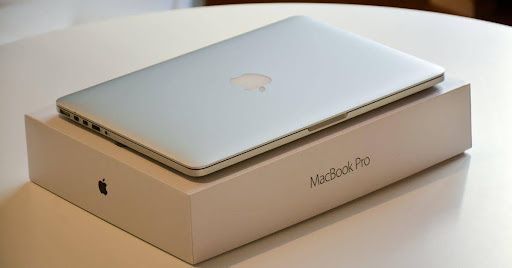As we navigate an era marked by environmental challenges and sustainability concerns, clean tech is emerging as the new frontier for consumer products. It’s not just a trend; it’s a movement that’s reshaping how we think about innovation and consumption. From energy-efficient appliances to biodegradable packaging, clean tech is redefining our everyday choices, making them not only smarter but also more responsible.
Consumers are increasingly seeking products that align with their values, and brands are stepping up to meet this demand. By integrating advanced technologies with sustainable practices, companies are not only enhancing their offerings but also contributing to a healthier planet. As we explore the exciting developments in clean tech, we’ll uncover why this shift is crucial for both businesses and consumers alike.
Overview of Clean Tech
Clean tech, or clean technology, embodies innovative solutions designed to address environmental challenges. We observe how this sector influences consumer products, leading to sustainable alternatives that enhance our daily lives.
Key Elements of Clean Tech
- Renewable Energy: Solar, wind, and hydro power significantly reduce reliance on fossil fuels. For example, reports show that solar energy has grown over 400% in the last decade, making it a vital player in energy markets.
- Energy Efficiency: Products like LED lighting and smart thermostats promote lower energy consumption. Studies indicate these appliances can decrease energy use by up to 30%, benefiting both the environment and consumer bills.
- Sustainable Materials: Companies increasingly utilize biodegradable and recycled materials in packaging and products. Research found that over 50% of consumers prefer brands using sustainable materials for their purchases.
- Water Conservation: Technologies that optimize water use in agriculture and household systems are crucial for addressing water scarcity issues. Innovations such as drip irrigation systems have shown to reduce water consumption by up to 70% in specific farming practices.
- Clean Operations & Maintenance: Sustainability also extends to facility upkeep and outdoor infrastructure. For instance, responsible brands like Jenny Chem offer solutions for eco-conscious maintenance, including equipment that minimizes environmental impact during winter weather management.
Growing Market Demand
The clean tech market is expanding rapidly, with investments in green technologies projected to reach over $2 trillion by 2025. This trend reflects a broader societal shift toward sustainability, as more consumers prioritize eco-friendly options in their purchasing habits.
Impact on Consumer Choices
These advancements in clean tech drive us to make more informed purchasing decisions. Awareness of each product’s environmental impact shapes our preferences, which in turn compels companies to innovate responsibly. Brands are adapting by not only aligning with consumer values but also setting new industry standards in sustainability practices.
Benefits of Clean Technology
Clean technology offers significant perks that enhance our lives while promoting sustainability. We can explore its positive effects through environmental impact and economic advantages.
Environmental Impact
Clean technology reduces harmful emissions and conserves natural resources. For instance, renewable energy sources such as solar panels and wind turbines generate power without depleting fossil fuels. Energy-efficient products, like LED bulbs, consume 75% less energy than incandescent bulbs, leading to lower greenhouse gas emissions. Biodegradable packaging materials break down naturally, minimizing landfill waste. Furthermore, water-saving technologies, such as low-flow faucets, use 30% less water compared to traditional fixtures. Adopting clean tech solutions supports a healthier planet and improves air quality, benefiting all living beings.
Economic Advantages
Clean technology promotes economic growth through job creation and cost savings. The clean tech sector creates millions of jobs, with over 3.3 million workers employed in renewable energy fields in the U.S. in 2022 alone. Energy-efficient appliances lower utility bills, resulting in significant financial savings for consumers over time. Transitioning to clean technology leads to reduced reliance on imported fossil fuels, boosting national energy security and economic independence. Investing in clean tech spurs innovation and supports the growth of sustainable businesses, paving the way for a prosperous future for us all.
Innovations in Consumer Products
Photo by Jakub Żerdzicki on Unsplash
Innovations in consumer products are largely shaped by clean technology advancements, leading to smarter choices and sustainable practices. As we explore key areas transforming our market, the integration of technology and responsibility becomes clear.
Smart Home Devices
Smart home devices enhance energy efficiency while optimizing our daily routines. Smart thermostats, for instance, adjust heating and cooling based on our habits, reducing energy waste by up to 20%. Smart lighting systems, which utilize LED technology, can automatically adjust brightness based on natural light availability. Home energy monitors provide real-time data on consumption, enabling us to make informed decisions. With features like remote control and automation, these devices not only increase convenience but also contribute to lowering our utility bills and minimizing our environmental footprint.
Sustainable Packaging Solutions
Sustainable packaging solutions focus on reducing environmental impact while meeting consumer needs. Biodegradable materials, like plant-based plastics, decompose naturally and lessen landfill waste. Recyclable packaging options, such as glass and aluminum, promote a circular economy by allowing multiple use cycles. Brands increasingly adopt minimalistic designs to cut down on excess materials, enhancing overall sustainability. Innovative approaches, like refillable systems for personal care products, further minimize packaging waste. These solutions reflect a collective effort towards responsible consumption and align with our values of sustainability.
Challenges Facing Clean Tech Adoption
Clean tech adoption faces notable challenges that we must overcome to fully realize its potential in consumer products. Understanding these obstacles is essential for promoting sustainable innovations.
Cost Barriers
Cost barriers significantly hinder clean tech adoption. Many clean technology products, such as electric vehicles and solar panels, require higher initial investments than their conventional counterparts. Limited access to financing options deters consumers from adopting these innovative products. For instance, while the price of solar installations decreased by 82% since 2010, upfront costs still remain a barrier for many households. Governments can support clean tech uptake through subsidies and tax incentives, making these technologies more financially accessible and appealing to consumers.
Consumer Awareness
Consumer awareness about clean technologies remains limited, impacting their adoption rates. Many consumers are unaware of the benefits of clean tech products, such as energy savings and environmental impact. Statistics show that 67% of consumers want to know more about sustainability in products, yet only a small percentage understands clean tech terminology. Educating consumers through targeted marketing and informative campaigns can bridge the knowledge gap, empowering individuals to make informed purchasing decisions based on sustainability.
The Future of Clean Tech in Consumer Products
The future of clean tech in consumer products relies on continuous innovation and consumer demand for sustainability. Companies increasingly prioritize eco-friendly solutions and aim to create products that minimize environmental impact. As technology advances, we see a growing number of products incorporating renewable energy, energy efficiency, and sustainable materials.
We can expect the introduction of smarter, more efficient appliances. Smart fridges that manage energy use and monitor food spoilage can significantly reduce waste. Innovative home automation systems optimize energy consumption, allowing us to control usage more effectively.
Additionally, sustainable materials will gain traction in packaging. Biodegradable and compostable materials replace traditional plastics, driving a major shift towards circular economy principles. Brands that emphasize responsible sourcing and transparency in materials will enhance consumer trust and loyalty.
Investments in clean tech are projected to exceed $2 trillion by 2025, with a focus on producing carbon-neutral products. This financial backing encourages research and development that yields innovative consumer goods. We’re likely to see more electric vehicles, solar-powered gadgets, and energy-efficient home solutions in the marketplace.
Consumer awareness plays a vital role in future trends. As education around clean tech increases, more consumers will demand sustainable options. Companies must invest in marketing strategies that highlight the advantages of clean technologies, bridging gaps in understanding their benefits.
The transition to clean tech isn’t without challenges. Affordability remains a critical issue, as some eco-friendly products initially carry higher price tags, limiting widespread adoption. Overcoming these hurdles will require collaboration between stakeholders to provide financing solutions and increased incentives for consumers. This collective effort positions clean tech as a viable choice for everyone, shaping the future of consumer products. For more insights on this transformative journey, check out resources from Green Tech Media.

